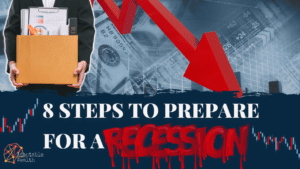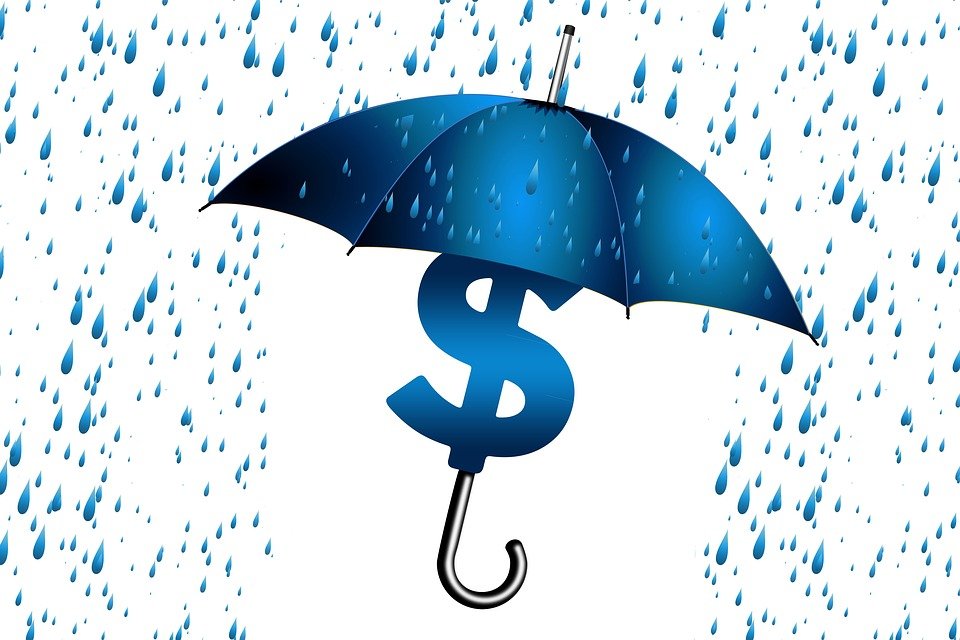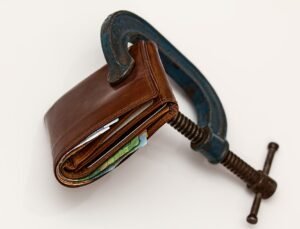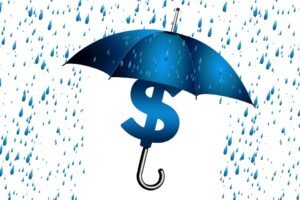

One of the greatest defenses if you're worried about inflation is not to have a lot of silly needs in your life. You don't need a lot of material goods.
- Charlie Munger Tweet
Inflation is already here. While I think it will eventually drop down to the 3-4% range (debt load, technological advancements, and declining population growth), I expect it stay elevated for the foreseeable future. The good news is there are tons of ways to protect yourself from inflation. You just need to be adaptable. Here are 30 ways, in no particular order, to overcome inflation. Some will work immediately, while others will take time to build up to. Additionally, there are several that are life-long strategies because prices are almost always rising.
Employee discounts
My employer offers generous discounts on my cell phone bill (20%), movie and theme park tickets, travel and technology. In fact, I just saved $25 per ticket taking my squids to Legoland a couple weeks ago. I also got a $20 per year discount (33%) on my purchase of the Microsoft Office package.
Check with HR and/or your company’s intranet to see if they have some discounts for you! You’ll be surprised at the options they have to help you protect yourself from inflation.
Stock up
First it was the pandemic. Now its supply chain issues. If you haven’t realized that everyone should be storing food, water, and other necessities, I don’t know what to say. Everyone, and I mean everyone, should have at least a couple months of such items stored. To lower costs, you can buy in bulk.
It’s also smart to buy durable goods such as furniture, generators, equipment and supplies etc. now before they go up in price any further. Not only will you save yourself some money, but they can increase in value and act as an investment too. Real goods that help you survive or do work, usually increase in value much more than other items.
Cook at home
The cost of food is going up so the cost of making your own food will go up, no doubt. But we all know that it’s more expensive to eat out. Not only do restaurants have to cover the rising cost of food, but they also need to make a profit for their efforts. As a result, you are going to pay a markup on top of the higher cost of food.
Another reason to cook at home is you develop a marketable skill. It could help you out in the future should you lose your job or find yourself in a position where you have to make some money…. some way, anyway.
Lastly, it’s healthier to eat at home anyway. You’ll tend to use higher quality food and add less salt and sugar than a restaurant will. As I point out later in this article, being healthy has one of the best ROIs on this list.
Most people think a constant markup (or tip) will result in constant increases to the consumer as prices rise. Wrong!
Prices increases compound over time. For example, if prices increase 3% in the first year and another 3% in the 2nd year, the 2nd increase is applied to the 1st increase.
In other words, the dollar amount of the markup compounds; Even with a constant markup rate.
Grow some of your own food
There are several reasons we should all be growing some of our own food. One, you will at least have something to keep you alive should food shortages pop up. Two, there are proven health benefits to eating very fresh foods which haven’t been sprayed with massive amounts of pesticides and fungicides. Three, there is growing evidence that gardening can reduce stress1 and promote healthier eating, higher life satisfaction, higher cognitive function and decreased severity of depression.2
Having chickens, if possible, is also a great way to “grow” your own food. They’re not too much work and eggs are one of the most nutritional foods we can eat.
Cooperate with your neighbors/community
Work with your neighbors to identify things that all of you need, like gardening or house cleaning. Then find someone who will do the job for everyone at a discount. They’d be getting several new customers at the same time so they should be willing to give a 10-15% discount.
This is how you can use collectivization to help protect yourself from inflation. Using this strategy for expenses such as a day care, tax preparation, pet grooming, haircuts and other personal care is also a possibility.
Of course, if money is tight, it’s probably better to just cut the expense. However, if you can afford it, and you’re just looking for a way to reduce your expenses, why not?
Be healthy
Eat healthy, exercise, sleep well, improve your 10 components of total health.
Avoiding health care costs has one of the highest ROIs on this entire list.
One study estimated the per capita lifetime expenditure on health care to be $316,000, with the following distribution across age. 3
- 0-20 years old = 7.8%
- 21-39 years old = 12.5%
- 40-64 years old = 31%
- After 65 years old = 48.6%
This means you are currently expected to spend $153,944 after you reach age 65. What will that become if you’re 35 right now? Assuming an average annual inflation rate of 3.5% (CPI-Health Care since 2000), you are expected to spend $417,477 on health care expenses after you hit 65.
That’s insane! And one massive financial reason to be as healthy as you reasonably can. Oh yeah, there’s this virus floating around. Survival rates are significantly higher for healthier people as well.
Ditch the gym
NO, don’t stop exercising. That’s not what I mean. Instead, get rid of your overpriced gym membership and exercise outside!
The possibilities are endless.
You can do weights at home and then go for a run. Stop at the park and do pull ups on the monkey bars. Find stairs to run up and down. Do lunges across the whole park, I dare you! Maybe start off with half the park first. You may not be able to walk home after doing the whole park.
We’ve been conditioned to think we need to go to a building to exercise. Nonsense.
Not only will you get in better shape and build better functional strength, but you’ll also get fresh air and exposure to the sun. All of which are better for your health.
Change your shopping & spending habits
Currently, beef and pork have risen 14%+ year over year. Poultry and fish have “only” risen 7.5%. Eating more chicken and seafood, and less meat and pork will save you money.
Each time a company processes or transforms a product, they incur a cost. As a profit seeking entity, they add a mark-up on top of each incremental dollar spent transforming that product.
Because of this, highly processed and packaged foods cost a lot more per unit of nutrition than unprocessed or minimally processed foods. Not to mention that the more you process something, the less nutrition remains in the product.
You will see exactly this playing out in the most recent CPI report.
Year over year % increases:
- canned vegetables = +6.6%
- fresh vegetables = +1.7%!!!
Eat more @#*! fresh vegetables people! To can green beans, for example, you need the cans, and you need the machines to fill the cans.
The consumer is going to pay for all the costs associated with bringing the fresh beans to market plus the cost of the machines, the cans, and a markup.
A common way companies sneak through price increases is by reducing the quantity while keeping the price the same. This is called “shrinkflation.” The sticker price doesn’t change but the price per unit of product goes up.
This is usually the first strategy of companies because so many consumers won’t realize it’s happening right away.
My most recent experience with this was with the shredded cheese I buy. The price remained at $4.99 per package, but they reduced the content from 8 oz to 7.5 oz. This may not seem like much, but it equates to a 6.67% increase in the price per oz of cheese!
A newly redesigned package is one clue that shrinkflation has happened. They’re trying to conceal their shenanigans.
If a brand that I buy pulls this crap, I will always move to another brand if I can. I hate companies that try to hide price increases. I will favor transparent companies who raise their sticker price. Don’t try to bullshit me.
Stop paying $1,200 for the new iPhone or anything else that you can get for hundreds of dollars cheaper if not for the brand. Brand loyalty is a loser’s game unless their products are so much better than others or you’re getting a discount for bundling their products and services.
You save money while also helping the environment! The best example of how this can save you money is rechargeable batteries.
You may pay a little more now for rechargeable batteries. However, each battery can be recharged 10-20 times helping you save over the long run.
Better yet, buy solar lamps and flashlights instead of ones that use batteries. Of course, you want to have a couple that do use batteries as a backup.
Other examples include
- Water filters instead of buying water bottles
- Cloth diapers for your baby instead of disposable ones
- Stainless steel thermos or cup for your coffee instead of a paper one
- Washable glass or plastic containers to carry food rather than sandwich baggies
- Plastic Christmas tree instead of buying a fresh one every year
Instead of paying for others to handle things for you, do it yourself.
- Wash your own car
- Cook at home
- take the kids to the park or on a hike instead of going to the theme park
- Stay in for a movie
- Make drinks at home and invite friends rather than going to a bar.
- If gas prices are high, walk or ride a bike more often.
- Make your own coffee instead of buying out.
Having already thought through your finances over the next 12 months leaves you ahead of the curve when needing to pivot/adjust your spending habits.
You know what is most important to you and what your goals are so you can adjust spending on the other “less important” areas.
Get a raise
There are 3 ways you can get a raise:
Build your skills

Ask for a raise
If prices are rising, it’s common for wages to be rising as well. Asking for a raise is one way you protect yourself from inflation.
One of the costliest things for a company is employee turnover. The lost productivity that comes along with training a new hire is costly. I’ve done several analyses on the cost of employee turnover at my current employer. Once an employee hits the 1-2 year mark, the cost of losing them is much higher than giving them a 10% raise in most circumstances.
Provided you’ve done a good job, you shouldn’t have a problem getting a decent raise.
You may not get it, but it never hurts to ask. Just be prepared to explore other options should you not get what you ask for.
Change jobs
The days of working for the same company for 30 or 40 years is largely gone and has been for a long time. If you’re not happy in your current position or you’ve been denied a raise, it doesn’t hurt to see what’s out there.
It’s common to be able to negotiate a raise when you take a new job. I have never changed jobs without getting at least a 10% raise.
Start business or side hustle
It’s a great idea to have a side gig regardless of the inflation rate because it helps diversify your income. But if your main purpose for starting a business is to overcome inflation, then a product or service that is reproducible at little to no cost is by far the best.
Noticed I said reproducible, not producible.
The original product or service may cost time and/or money, but all the other units are very low cost or practically free.
Examples include software, video, audio, or anything able to be copied and disseminated via a computer or other technology.
Play the tax game
This one piggybacks off the last one because starting a business opens so much more of the tax code to you. Under many circumstances you can now write off a portion of your rent or mortgage for home based businesses. Some meals, phone, internet, education, professional and legal fees are also deductble.5 Hell you can depreciate your car and other equipment like computers when used for your business. There is so much more to the tax code when you run a side business.
Note: I am not a tax specialist. You should consult your CPA or tax attorney before making any type of tax-based decisions. My comments do not construe tax advice. They are for informational purposes only.
Tax savings opportunities are very limited for employees. Here are a few you can look into:
- 401k
- Flexible spending account
- Health savings account
Take advantage of credit card rewards
Cash back schemes are not good deals for 99% of people. You must meet two conditions:
- You have the self-control to not put crap on credit cards unless it’s something you were already going to buy.
- The money to cover the purchase is in the bank (right now! Not in a couple days or a week!).
I use the following cards to save a little on my monthly expenses and they work perfectly:
10% back on groceries & 10% bitcoin back at restaurants.
These are like coupons though and you can only use one per week.
There is a $7.50 reward cap per transaction but that still adds up to $15 per week or $60 per month based on my spending patterns. I’ll take it.
5% cash back on your entire purchase no matter what. That’s 3 times higher than 10-year treasury yields!
Unlike Treasuries, you don’t have to wait several months to get the money. You get it at checkout.
5% cash back on 2 choices of utilities, cell phones, TV/Internet, gym and more.
2% cash back on 1 choice of groceries, gas stations and restaurants.
I get $20-25 per month in cash back just by running my kids tuition, my utilities and my cell phone through this card.
In all, I save about $100 per month with these three cards.
I must reiterate… I do not put anything on these cards that I’m not already going to buy.
Convert your variable rate debt to a fixed rate
As interest rates rise, the balance of your loan won’t grow like they would with a variable rate. Better yet, your income tends to grow over time putting you in an even better position.
Make sure to calculate how long it will take to breakeven. When converting from a variable to a fixed rate, you will most likely have to pay fees to complete the conversion.
If it’s going to take 5 years just to recoup the fees, it’s probably not worth it unless you’re converting a mortgage or other long-term loan. If it will take a year or so, then that’s much more feasible. The breakeven period will depend on how high you think your interest rate will rise if you don’t convert it to a fixed rate.
Lend your idle cash through peer-to-peer lending
The rates are higher so you can more easily earn positive real returns, but the risk is higher too. Do your due diligence.
Delay social security to maximize the payout
Stay invested
Your assets and savings can be decimated by inflation just as easily as your income, and arguably even more. While most of your income is going to be used in the immediate term, your stock of assets (savings) is not going to be used for possibly 20, 30 or even 40 years from now. If the value of your assets can’t at least keep up with inflation, you will lose a staggering amount of purchasing power.
For example, if your returns are even 1% less than inflation every year over a 30-year period, a nest egg of $1 million will be able to buy only $747,172 of goods and services. A 25% reduction.
While compounding can work for you when you invest, it works against you with inflation, just like it does with debt.
Compound interest is the eighth wonder of the world. He who understands it, earns it. He who doesn’t, pays it.
- Albert Einstein Tweet
It is vital that your savings increase faster than inflation. Here are 6 investments that can help you protect yourself from from inflation:
Stocks
Companies with pricing power, a highly fixed cost structure, and a low cost of replication are the best bet to perform well during inflationary environments.
Strong brand
As we mentioned earlier, a strong brand is pivotal to a successful business. It becomes even more important during inflationary times. Companies with a strong brand can raise prices with less impact to their volumes than their competitors.
Relatively few substitutes for their products
If there aren’t many alternatives to a product that is deemed by most consumers as something they need or really, really want, the more easily they will be able to pass rising costs onto the consumer.
High switching costs
Switching costs are costs incurred by a business to switch from one provider to another. The higher the switching costs, the more operationally and/or financially expensive it is to switch. This reduces the probability that price increases will be rejected.
Example of switching costs include:
- Time to find another provider and work out a contract for their products and/or services.
- Effort and manpower required to integrate and configure the products and services of the new provider.
- Lost productivity due to employees having to learn new processes, systems, and programs.
- Fees – It is quite common for there to be fees due when a company ends the contract with a provider. Kind of like the fee individuals may have to pay to get out of a cell phone contract.
This one is very complicated with several variables that is out of the scope of this article. In general, the higher the percentage of fixed costs (machinery, buildings etc.) compared to variable costs (supplies, materials etc.), the less of an impact rising input prices will have on their profitability in the immediate term.
Review the financial statements and dig into their business model to assess their cost structure.
This is similar to the highly fixed cost structure but instead of focusing on whether their costs are highly fixed or not, it focuses on their marginal cost of production, or the cost to produce one more unit.
If it costs a fraction of a cent to produce and distribute the product or service, like it does for software companies, then inflation will tend to have a smaller effect on their cost of production than companies that produce items that have high marginal costs like cars, houses, machinery etc.
I’m not saying that automobile, housing or industrial companies will not do well during inflation. It all depends on industry dynamics and whether each individual company can maintain or grow their margins by controlling their costs. Having a lower marginal cost of production will only help.
Dividend Paying Stocks
Cash flow is king when inflation is high due to the time value of money.
The time value of money is the concept that a dollar earned now is more valuable than a dollar earned in the future. It is especially true during times of rising costs and/or higher interest rates.
Dividends can help meet living expenses, or to reinvest and grow your savings over time. This is not to say that you can’t or won’t lose money on dividend paying stocks during inflationary times. You definitely can. But a dividend can only help.
REITs
Real Estate Investment Trusts (REITs) are companies that invest in a portfolio of real estate and are required by law to distribute at least 90% of its taxable income each year.6
Because of this distribution requirement, REITs tend to have much higher payouts than ordinary dividend paying stocks. You can get yields of 5%, 7% or even 10%+, depending on the specifics of each trust. This is why I always have a chunk of my savings in REITs. They provide strong cash flows, and this can be very helpful in your quest to protect yourself from inflation.
REIT distributions usually don’t meet the requirements of qualified dividends.
Instead, they’re taxed at ordinary income rates rather than the lower long-term capital gains tax rates. Because of this, it is usually better to hold REITs in tax advantaged accounts such as an IRA.6
Real estate &/or land
Until recently, real estate tended to trend with the rate of inflation. Since the mid 1990’s, it has taken off.

In general, real estate helps you protect yourself against inflation over long periods of time. It tends to lose purchasing power during recessions and regain it during expansions. If you hold it for long enough, it’s likely to beat inflation.
Of course, it depends on the price you pay for the property.

Other than being an inflation hedge, real estate offers many advantages for growing your financial wealth. However, it also has several disadvantages
- it tends to outperform inflation over long periods of time.
- The true cost of fixed rate debt decreases over time.
As prices rise, a single dollar buys less goods and services. It becomes less valuable. On the other hand, fixed rate debt stays constant in dollar terms regardless of what happens to prices.
Therefore, when you’re paying down large debts like a mortgage, inflation is actually helping you. It costs you less and less goods and services to pay off your debt.
That’s not all. Wages tend to rise over time with inflation. Over time, your debt becomes a smaller percentage of your income, making it easier to pay. It costs you less time and energy to pay down your debt.
- It can provide a positive cash flow
Provided you don’t pay too much for the property, and you don’t have too high of vacancy rates or repair costs, you can develop another income stream.
The extra income can offset rising living expenses, you can reinvest in the property to increase its value, or you can reinvest in other income or capital gains generating assets. This way your financial wealth continues to outpace inflation.
- It can help diversify your wealth
- It has a real intrinsic value – shelter
- Tax benefits
Although the Trump administration reduced the advantage of mortgage interest deductions, there are several other deductions that are still available, including :
- Depreciation
- Deferral of capital gains via 1031 exchanges
- Property tax deductions
- Professional service costs (property management, repairs, maintenance etc.)
Lastly, when you build a business around property investments, many other tax advantages become available. This is out of the scope of this article but if you’re considering real estate investing, I strongly suggest you learn about these possibilities.
As usual, please consult a tax professional before taking any tax advice over the internet. I am not a tax professional.
- You must come up with several thousand dollars minimum for a down payment.
- If you don’t put at least 20% down, you will pay mortgage insurance until the loan to value ratio (LTV) drops to 80% or less.
This is just money down the drain. You get no benefit from it whatsoever.
- You have to pay property taxes
- A mortgage will cost most people about twice the amount of the price of the house to pay off
It depends on your down payment and how long you hold the property. This assumes you pay the debt over 30 years.
The beauty is that if you keep a tenant in the property, and rents cover the mortgage, you won’t pay a dime!
- Maintenance and repair costs
- Landlord responsibilities
You may have to deal with horrible tenants and/or kick someone out. You could have property managers do this stuff for you, but it will cost you, thereby lowering your profit.
- Neighborhoods change over time
Sometimes for the better and sometimes for the worse. The problem is you can’t just move your house if the neighborhood gets worse over time.
- Tax codes change over time
Existing tax advantages may go away making your property less profitable than expected.
- Low liquidity
It will take at least a month to fully sell a house if you need to.
Commodities & natural resources
- Energy commodities such as oil, heating oils and natural gas.
- Energy & industrial metals such as copper, lithium, nickel & cobalt
- Other possibilities include water rights, farmland, carbon credits etc.
Most of these investments are trendy right now and have logged large gains over the past few years. Even though I expect the interest, and therefore the prices, to grow for the foreseeable future, it may be smart to wait for a pull back before buying in.
Gold, silver & Bitcoin/crypto
This chart speaks for itself. Since 1968 gold has trounced the CPI while silver has tracked it very closely with a couple of spikes here and there. In other words, gold has increased your purchasing power while silver has supported it.

I didn’t include Bitcoin or Ethereum because they’ve only been around since 2009-2010 and I wanted to show a long-term trend.
We all know how well these two cryptos have performed over the past 12 years. They’ve blown away all other assets. Unfortunately, we can’t guarantee they will blow out all other assets over the next 50 years, or even 12 years. However, expected returns are high given the pending adoption by corporations, banks and investment firms.
Treasury Inflation Protected Securities (TIPS)
These are US government bonds that pay a fixed rate of interest. The difference is that the principal amount is adjusted up and down depending on the CPI measured inflation rate.7
Just because you get a base rate plus the CPI doesn’t mean you fully protect yourself from inflation.
As I demonstrate in “Manipulation of inflation? Problems with the CPI & PCE,” the CPI understates inflation.
Additionally, inflation rates are personal. Your inflation rate could be higher or lower than the CPI.
When using an investment to protect yourself from inflation, your personal inflation rate plus the CPI understatement is what really matters.

All of this is to say that although TIPS may have a built in CPI adjustment, they’re not a guarantee to fully protect against inflation.
I do agree that they offer more inflation protection than non-inflation adjusted bonds do. However, saying that one investment is a better way to protect yourself from inflation than another investment is different than saying that an investment protects your standard of living from inflation.
And there you have it. 30 ways to protect yourself from inflation. There are at least 5 actions on this list that everyone can take right now. I suggest finding your sweet spot between the benefit and the time needed to accomplish. Once you’ve found the ones that make sense for you, start immediately.
Rising prices affect us all and they do not wait for anyone. You are either working to protect yourself from inflation, or inflation is literally picking your pocket. Your time and energy are being stolen from you. Evaporating into thin air, never to return. The good thing is that you can take it back, or at least some of it.
1 Van Den Berg AE, Custers MHG. Gardening Promotes Neuroendocrine and Affective Restoration from Stress. Journal of Health Psychology. 2011;16(1):3-11. doi:10.1177/1359105310365577 https://journals.sagepub.com/doi/abs/10.1177/1359105310365577
2 Masashi Soga, Kevin J. Gaston, Yuichi Yamaura, Gardening is beneficial for health: A meta-analysis, Preventive Medicine Reports, Volume 5, 2017, Pages 92-99, ISSN 2211-3355, https://doi.org/10.1016/j.pmedr.2016.11.007.
3 Alemayehu B, Warner KE. The lifetime distribution of health care costs. Health Serv Res. 2004 Jun;39(3):627-42. doi: 10.1111/j.1475-6773.2004.00248.x. PMID: 15149482; PMCID: PMC1361028. https://www.ncbi.nlm.nih.gov/pmc/articles/PMC1361028/
4 Bulent Unel. Department of Economics, Louisiana State University. Analyzing Skilled and Unskilled Labor Efficiencies in the US. Journal of Macro Economics 32 (2010) 957-967. https://sites01.lsu.edu/faculty/bunel/wp-content/uploads/sites/138/2016/08/BUnel-JM.pdf. Accessed 11/1/2021
5 2021 complete list of small business tax deductions. By Erin Osterhaus. Intuit QuickBooks. https://quickbooks.intuit.com/r/taxes/small-business-tax-deductions/. Accessed 11/2/2021
6 US Security and Exchange Commission. Investor Bulletin: Publicly Traded REITs. https://www.sec.gov/oiea/investor-alerts-bulletins/ib_reits.html. Accessed 11/4/2021
7 Treasury Direct. Treasury Inflation-Protected Securities (TIPS). https://www.treasurydirect.gov/indiv/research/indepth/tips/res_tips.htm Accessed 11/5/2021
Get Our Latest Delivered To Your Inbox
You will receive 1-2 emails per month and you can unsubscribe at anytime













